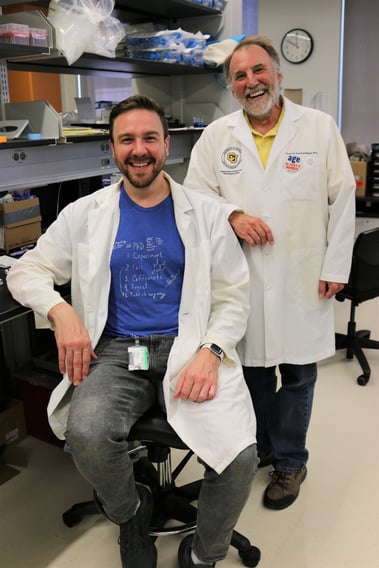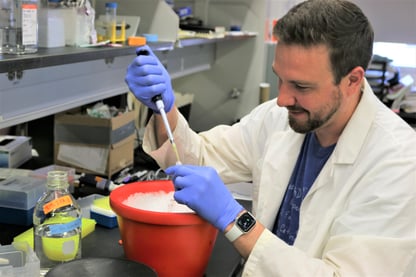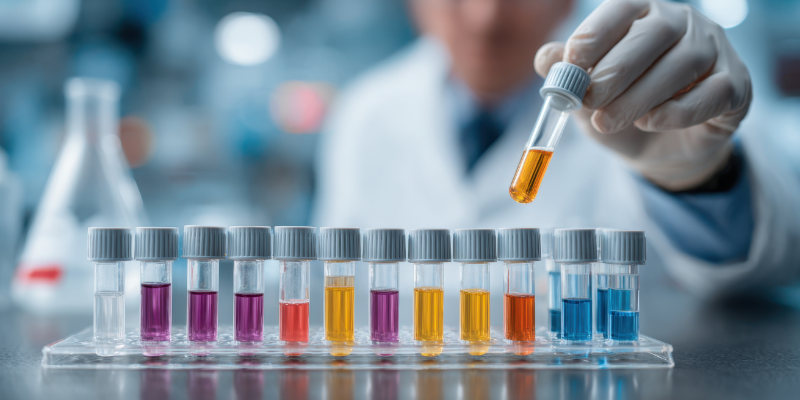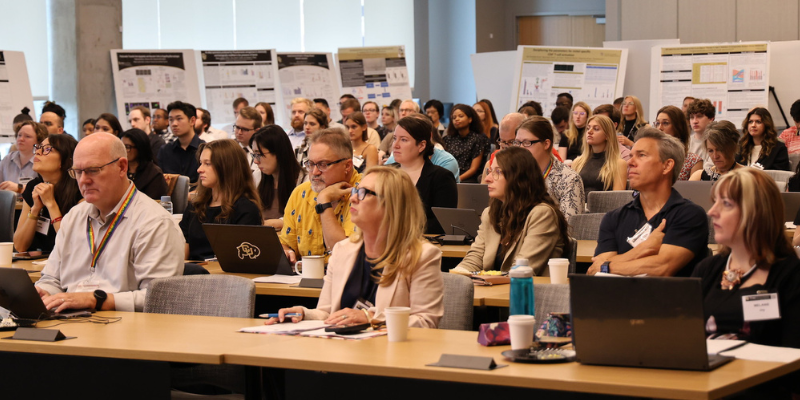Tom Anchordoquy, PhD, hates cancer. And, for most of his professional life as a professor and researcher with the Skaggs School of Pharmacy and Pharmaceutical Sciences, he’s been focused on new ways to deliver drugs to tumors. His latest research, however, is taking a different approach.
“Instead of focusing on drug delivery (getting more chemotherapy to the target tumor), this technique is more about reducing the side effects of chemotherapy, like losing hair, nausea and lack of appetite,” Dr. Anchordoquy said.
While chemotherapy is an essential component of treatment for many cancers, the nature of chemotherapy means that while
 Dr. Tom Anchordoquy, right, poses with PhD student Scott Tilden in his lab. Tilden recently published a paper on their new research. |
damaging cancer cells it also damages healthy cells, leading to side effects that impact the individual’s physical health, quality of life and emotional state. According to research published by the National Institutes of Health, 86% of cancer patient participants reported chemotherapy side effects, ranging from mild reactions to debilitating nausea and fatigue. The management of a side effect can include a reduction in the dose intensity of chemotherapy and there is evidence that patients who receive low-dose chemotherapy have reduced survival rates.
The work that Anchordoquy and his team have undertaken is already showing that reduced side effects, are in fact, allowing a higher dose of chemotherapy to be delivered resulting in better outcomes.
“Because of the reduced side effects, this approach could foreseeably be used to deliver a more aggressive drug regimen to the patient. Scott has shown with mice that have gotten this treatment, they are able to receive much higher doses of chemotherapy than the untreated mice. So much so, that they’re still alive.”
So, who is Scott and exactly what is this new treatment?
Scott Tilden is one of Anchordoquy’s PhD students who works in his lab. And, about the only thing more important to Anchordoquy than eradicating cancer is promoting student learning and recognition.
“Working with Tom has been a dream come true. He helped get me out of a bad situation during my first year of graduate school and ever since I have been grateful to work alongside him, “ Tilden said. “Too often I hear people talk about the problems and difficulties they have with their mentors, but from day one Tom has treated me like a peer and allowed me to succeed in ways I could not have imagined.”
Clearly, student and mentor have mutual admiration for each other. The research that they are working on together seeks to exploit the body’s
 Tilden works with some of the specimens used in their current research. |
innate immune system. Anchordoquy explained that all of today’s current vaccines are based on the body’s adaptive immune system. This more evolved system specifically targets the type of germ that causes an infection. The older, innate system, however, isn’t quite that sophisticated and essentially shuts down all the cells to the potential threat.
Anchordoquy uses a historical reference to help explain the process.
“When the innate immune system is activated it sends out an urgent message – like Paul Revere yelling ‘The British are coming!’ It’s not a specific message about a specific ‘soldier,’ but the body knows that something bad is coming,” he said. “All the tissues in your body hear ‘The British are coming!’ and the cells shut down and reduce the number of invaders that can get in.”
But what about the cancer cells? Are they shutting down too? Anchordoquy has good news.
“The cancer cells are deaf. They can’t ‘hear’ the message to shut down,” Anchordoquy explains. “So, while the immune signals are telling all the other cells to shut their doors, we administer chemotherapy in a virus-sized package that will enter the tumor.”
If this new technique for delivering chemotherapy sounds exciting, it is. Anchordoquy has already applied for a patent and the first iteration of the research has just been published in the Journal of Controlled Release.
"We are applying for funds to test this idea in a clinical trial, and we have hope that patients will experience much-reduced side effects while undergoing chemotherapy," Anchordoquy said. "With fewer side effects, the cancer could be treated more aggressively and increase the chances of a cure.”



